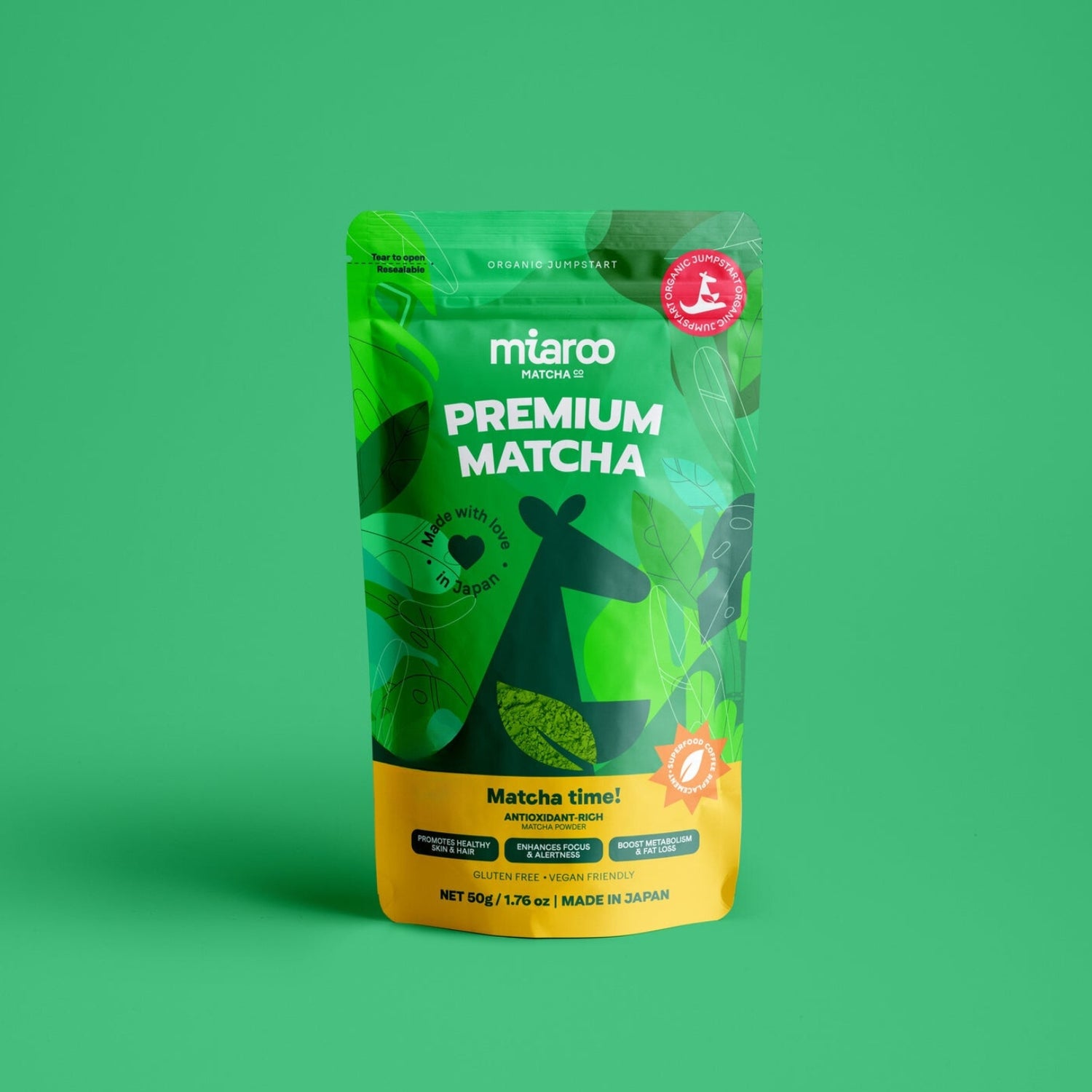Sources & References
Matcha green tea powder has been around since antiquity. It was used by the Zen monks at the genesis of Buddhism through their long hours of meditation and carried into the traditions of the Samurais.
As such, it has since been so widely researched across countless studies and is actively being studied further as Matcha makes it's reemergence into the world through our collective pursuit of health and wellness.
Throughout the Miaroo Matcha website we share the information and data presented by this research. We do so for informational purposes and not as medical advice. Please continue to do your due diligence by reviewing our sources below:
References
[1] WHO, Coronavirus disease 2019 (COVID-19). Situation Report—41.
[2] Blumberg, J. B., Frei, B., Fulgoni, V. L., Weaver, C. M., & Zeisel, S. H. (2017). Contribution of dietary supplements to nutritional adequacy in various adult age groups. Nutrients, 9(12), 1325.
[3] Sekhri, K., & Kaur, K. (2014). Public knowledge, use and attitude toward multivitamin supplementation: A cross-sectional study among general public. International Journal of Applied and Basic Medical Research, 4(2), 77.
[4] Read, S. A., Obeid, S., Ahlenstiel, C., & Ahlenstiel, G. (2019). The role of zinc in antiviral immunity. Advances in Nutrition, 10(4), 696-710.
[5] Chien, C. T., Chang, W. T., Chen, H. W., Wang, T. D., Liou, S. Y., Chen, T. J., ... & Hsu, S. M. (2004). Ascorbate supplement reduces oxidative stress in dyslipidemic patients undergoing apheresis. Arteriosclerosis, thrombosis, and vascular biology, 24(6), 1111-1117.
[6] Hemilä, H., & Chalker, E. (2013). Vitamin C for preventing and treating the common cold. Cochrane Database of Systematic Reviews, (1).
[7] Somanchi, M., Phillips, K., Haile, E., & Pehrsson, P. (2017). Vitamin C content in dried and brewed green tea from the US retail market. The FASEB Journal, 31(1_supplement), 956-8.
[8] Rizvi, S., Raza, S. T., Faizal Ahmed, A. A., Abbas, S., & Mahdi, F. (2014). The role of vitamin E in human health and some diseases. Sultan Qaboos University Medical Journal, 14(2), e157.
[9] Kowdley, K. V., Mason, J. B., Meydani, S. N., Cornwall, S., & Grand, R. J. (1992). Vitamin E deficiency and impaired cellular immunity related to intestinal fat malabsorption. Gastroenterology, 102(6), 2139-2142.
[10] Kagawa, Y. (2008). Standard tables of food composition in Japan. Standard tables of food composition in Japan fifth revised and enlarged edition, 28-36.
[11] USDA Food Data, FDC ID #171917
[12] Kishimoto, K., Kobayashi, R., Sano, H., Suzuki, D., Maruoka, H., Yasuda, K., ... & Kobayashi, K. (2014). Impact of folate therapy on combined immunodeficiency secondary to hereditary folate malabsorption. Clinical Immunology, 153(1), 17-22.
[13] Chua, W. J., & Hansen, T. H. (2012). Immunology: vitamins prime immunity. Nature, 491(7426), 680-681.
[14] Spinas, E., Saggini, A., Kritas, S. K., Cerulli, G., Caraffa, A., Antinolfi, P., ... & Saggini, R. (2015). Crosstalk between vitamin B and immunity. J Biol Regul Homeost Agents, 29(2), 283-8.
[15] Baldermann, S. (2008). Carotenoid oxygenases from Camellia sinensis, Osmanthus fragrans, and Prunus persica nucipersica (Doctoral dissertation, PhD thesis, Technische Universitat Braunschweig, Germany).
[16] Adnan, M., Ahmad, A., Ahmed, A., Khalid, N., Hayat, I., & Ahmed, I. (2013). Chemical composition and sensory evaluation of tea (Camellia sinensis) commercialized in Pakistan. Pak. J. Bot, 45(3), 901-907.
[17] Suliburska, J., Bogdanski, P., Szulinska, M., Stepien, M., Pupek-Musialik, D., & Jablecka, A. (2012). Effects of green tea supplementation on elements, total antioxidants, lipids, and glucose values in the serum of obese patients. Biological trace element research, 149(3), 315-322.
[18] Prystai, E. A., Kies, C. V., & Driskell, J. A. (1999). Calcium, copper, iron, magnesium and zinc utilization of humans as affected by consumption of black, decaffeinated black and green teas. Nutrition Research, 19(2), 167-177.
[19] Mandiwana, K. L., Panichev, N., & Panicheva, S. (2011). Determination of chromium (VI) in black, green and herbal teas. Food Chemistry, 129(4), 1839-1843.
[20] Powell, J., & Thompson, R. H. (1998). In vitro mineral availability from digested tea: a rich dietary source of manganese. Analyst, 123(8), 1721-1724.
Additional studies will consistently be added here, including those found on https://www.researchgate.net/publication/312134830_Effect_of_Green_Tea_Phytochemicals_on_Mood_and_Cognition







